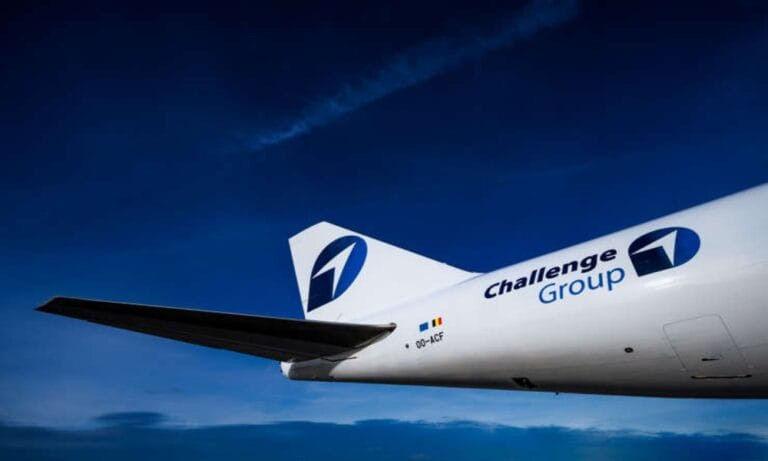- Challenge Group is expanding its end-to-end freighter network across Southeast Asia, linking regional production hubs directly to Europe, the Middle East, and North America through its 24/7 Liège base to offer reliable main-deck access and seamless global connectivity.
- Its vertically integrated model combines airfreight, handling, trucking, and logistics, delivering single-point accountability, faster clearance, and full digital visibility for high-value and time-critical cargo like pharmaceuticals and aerospace parts.
- Fleet flexibility and multimodal investment underpin growth, with 747 and upcoming 777-300ERSF freighters supporting new SEA routes, and integrated air–road and air–sea corridors — including a planned Singapore–Liège connection — enabling true end-to-end solutions.
From seafood and tropical fruit to pharmaceuticals and aerospace parts, demand for special cargo lift is growing across the Southeast Asia region. But limited main-deck access at secondary airports and fragmented ground infrastructure are exposing gaps in the system.
Operators with long-haul freighters and vertically integrated models are increasingly stepping into that space. Among them is Challenge Group, which is using Southeast Asia to scale its end-to-end strategy, connecting high-value regional production centres directly to Europe, North America, and the Middle East via its Liège hub.
“We are expanding frequencies and tailoring routings to connect Southeast Asia’s fast-growing production hubs with our key gateways in Europe, the Middle East, and the US,” said Or Zak, Chief Commercial Officer at Challenge Group. “By leveraging our agile scheduling and strategic interline agreements, we ensure that even secondary SEA airports gain reliable access to global markets.”
Challenge Group sees Southeast Asia not just as a growth market, but as a real-world test for its full-service model. The company handles airfreight, ground ops, logistics and trucking under one roof — aiming to cut risk and time for shippers moving temperature-sensitive or regulated cargo.
“By combining airfreight operations, handling, trucking, and logistics under one roof, we offer shippers true end-to-end control,” Zak said. “This reduces transit times, minimises handover risks, and gives them a single point of accountability — critical for complex markets like Southeast Asia.”
That model is built for markets where delays can spike quickly due to customs variation or underdeveloped handling. Zak said local partnerships remain key.
“We work closely with local agents who have deep knowledge of each country’s compliance landscape,” he noted. “Our in-house specialists oversee documentation, security protocols, and any necessary certifications, ensuring a smooth clearance process even in highly regulated sectors.”
The company also equips its network with real-time tracking, IoT sensors and digital documentation — reflecting rising expectations from high-value cargo owners.
“This gives customers full visibility and proactive alerts throughout the supply chain, which is especially valuable for pharma and aerospace cargo,” Zak added.
Why fleet still matters
While digital systems grab the headlines, Challenge Group argues that aircraft type remains a defining factor in whether an operator can serve SEA’s emerging corridors effectively.
“Fleet flexibility is essential,” Zak said. “Our 747 freighters can operate long-haul missions directly from SEA to Europe without compromise on payload, enabling us to serve niche or capacity-constrained markets that often lack regular main-deck service.”
The carrier’s Liège base plays a central role, functioning as a 24/7 hub where inbound shipments from Southeast Asia are quickly redistributed onward.
“Liège is our control tower in Europe — a 24/7 cargo hub optimised for fast transfers,” Zak said. “From there, shipments from SEA can reach virtually any European city overnight and connect seamlessly to North America, Africa, and the Middle East via our network and partners.”
Looking ahead, Challenge Group plans to add its first Boeing 777-300ERSF converted freighter — with improved fuel efficiency and payload range — to further expand long-haul options.
Multimodal demand shifts the conversation
What makes Southeast Asia distinctive, Zak argues, is not just cargo volume, but the complexity of movement from inland origin to global destination.
“Yes, especially for high-value or urgent cargo,” Zak said when asked about multimodal demand. “Customers increasingly expect integrated air–road or air–sea solutions that cover everything from pick-up at origin to final-mile delivery.”
That requires investment beyond the air leg. Challenge is building out multimodal corridors and prioritising local infrastructure that can match its European capabilities.
“Strong partnerships with ground handlers, customs brokers, and trucking companies are vital,” Zak said. “We also prioritise facilities with temperature-controlled zones, secure storage, and specialised equipment for outsized cargo to match our handling capabilities in Liège.”
One strategic target is Singapore, where the carrier plans to add direct lift into its European network.
“One of our key targets is to connect Singapore, a strategic hub for trade and multimodal logistics, with our Liège hub,” Zak said. “This will give our customers enhanced connectivity to their business partners and to global trade in general.”




